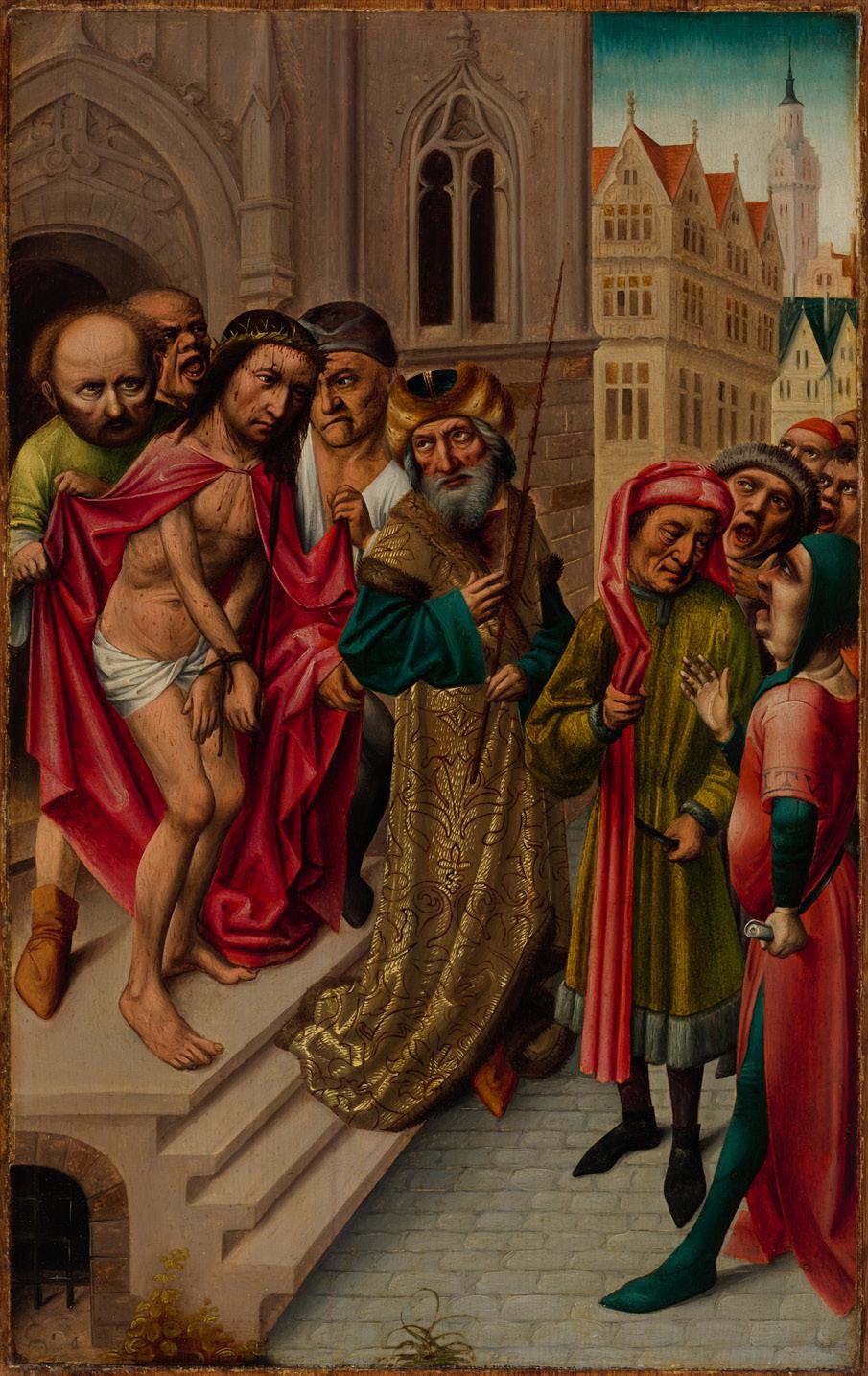
5 minute read
11 Christ Crucified, attributed to Tilman Riemenschneider
from JB Test 01/22
Recto: ‘St. Christopher and the Virgin Mary with the Christ Child’ ‘St. Anne and St. Anthony’
12
Advertisement
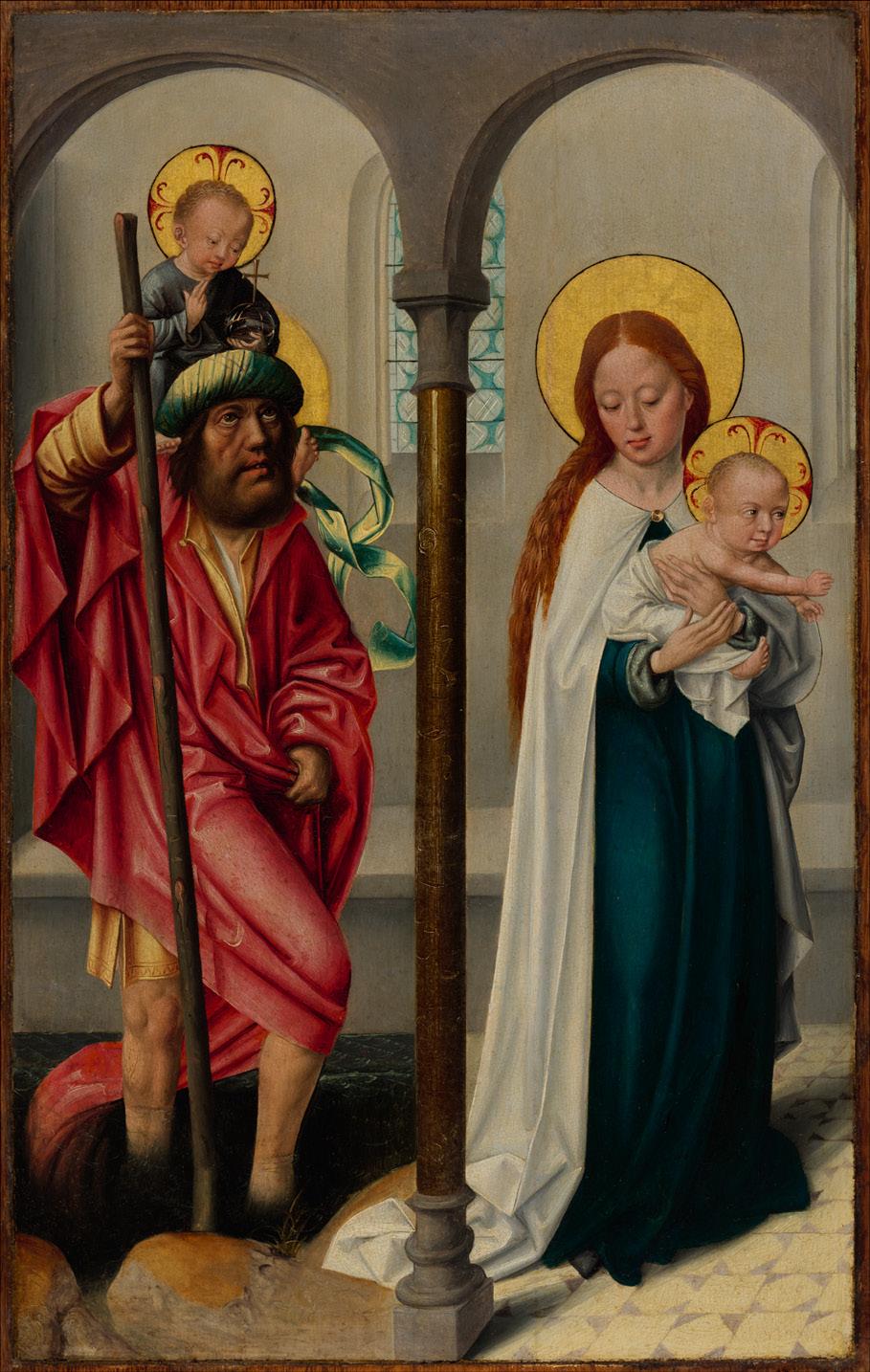
Verso: ‘Ecce Homo’ and the ‘Entombment’
12
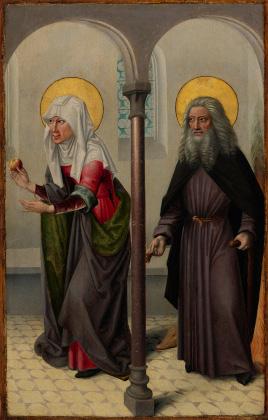
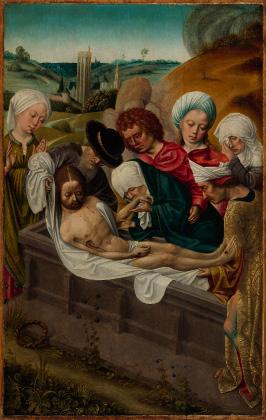
TWO WINGS OF A SMALL ALTAR WITH SCENES OF THE LIFE OF CHRIST
Germany, Westphalia Late 15th century
Recto: ‘St. Christopher and the Virgin Mary with the Christ Child’ ‘St. Anne and St. Anthony’
Verso: ‘Ecce Homo’ and the ‘Entombment’
Oil on wood Height 79 cm, width 57 cm, each circa
Provenance: The Berkeley Collection, Spetchley, Worcestershire, before 1916. From 1916 until 2019 in family ownership.
Literature: ‘Spetchley Park I. Worcestershire. The Seat of Mr. R. V. Berkeley’ in: Country Life, 8 July 1916, p. 45, photographed in the salon; Spetchley inventory 1949.
Related literature: Hilger, Hans Peter. Die Stadtpfarrkirche St. Nicolai in Kalkar, Cleves 1990, p. 54, on the Master of the Kalkar Death of the Virgin Mary. Derick Baegert und sein Werk, exh. cat. Städtisches Museum Wesel, 27 nov. 2011-15 jan. 2011, Wesel 2011. The two panels, painted on the front and back, are from a small winged altarpiece. When open, the scenes from the life of Christ would possibly have framed a painted or carved representation of the Crucifixion in the centre. When closed, the panels bear a depiction of an architecturally structured sacred space lit by three arched windows. There is a stone bench at seat height below. Four arcades in the foreground frame holy figures that, at the same time, create a distance to the viewer. The tiled floor painted in perspective consciously lends the scene depth.
Depicted from left to right are St. Christopher carrying Jesus across a river, the Virgin Mary with the Christ Child, her mother Anne and, on the far right, St. Anthony with his attributes, a small bell and the piglet, whose pointed, smooth snout protrudes from under the habit. The fine, blazing fire behind Anthony refers to the proverbial ‘St. Anthony’s fire’, a disease caused by ergot poisoning that was thought to be a skin disease in the Middle Ages. It was believed that relics of St. Anthony could cure the painful and often fatal disease.
The golden nimbuses framing the heads of the saints still correspond to the tradition of medieval panel painting. However, there are also numerous details that have their origins in postmedieval realism and are aimed at stimulating the viewer’s sensory perception. Bodies and columns cast shadows on the floor, delicately executed waves play on the water of the river over which St. Christopher carries the baby Jesus. The Christ Child, his hand raised in the gesture of a blessing, holds a globe in his left hand that is not made of metal but of glass in which the outside world is reflected. The unknown artist also skilfully depicts the saints’ clothing: Anne is dressed in fashionable courtly style. She is wearing a velvet undergarment, a red robe trimmed with white ermine and a green-lined cloak. The Virgin Mary, on the other hand, is majestic in her blue dress and white cloak, held together by a golden clasp.
12
1 Stauffer, in exh. cat. Wesel 2011, op.cit., p. 50.
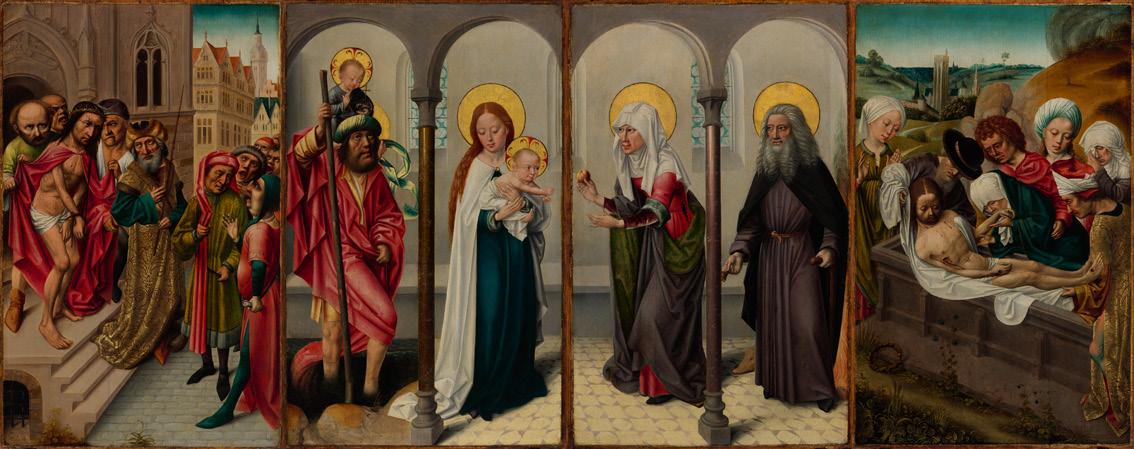
The saints depicted on the outside are everyday patron saints: St. Christopher watches over the traveller, St. Anthony or the Order of St. Anthony named after him symbolises the care of the sick, success in the cultivation of the land and cattle breeding.
When open, scenes from the Passion of Christ can be seen. It is not known if this was a multi-part winged altar or if only these two surviving episodes from the life of Christ were depicted. Certainly one must imagine that Christ being Presented to the People and the Entombment, to the left and right, framed a central scene of the Crucifixion whose whereabouts are unknown.
‘Ecce Homo’ In the presence of the high priests, Pontius Pilate presents Christ, who has been scourged and crowned with thorns, to the Jewish people. According to tradition, he is prepared to release one prisoner at Passover. Pontius Pilate tells the crowd that Christ is free of guilt and calls for their pity: “Ecce homo – Behold the man”. However, the people, incited by the priests, want the insurrectionary Barabbas to be released and demand the crucifixion of the Son of God.
The composition is in keeping with a form of pictorial composition that evolved in the 15th century. Christ is led to an open area at the bottom of a staircase, beneath which is a prison. Pontius Pilate, splendidly dressed, stands mediating between Christ and the people. The high priest Caiaphas, the spokesman of the Jews against Christ, stands with his feet wide apart on the far right of the picture. Through printmaking, as here in an engraving by Israhel van Meckenem the Younger (c. 1440-1503, fig. 1), this composition became very popular in the second half of the 15th century. Israhel van Meckenem was active in Cleves in 1465 and in the Westphalian town of Bocholt in 1482.
The other panel depicts the Entombment of Christ. The body with the stigmata, wrapped in a white cloth, is being placed in a stone sarcophagus by Joseph of Arimathea and Nicodemus. The Virgin Mary, supported by Christ’s favourite disciple John, is kissing her son’s hand. Behind her stands Mary Magdalene. Two other female mourners complete the group. The scene is framed in the background by a hilly landscape with the suggestion of an urban architecture. In the foreground a meadow is shown; the grasses and flowers are rendered with great naturalistic precision.
As on the front panels, the masterly depiction of surfaces and materiality is astonishing. With the background architecture and the splendid courtly robes, the artist confidently establishes a reference to the present day. The strong, contrasting colours, the style of the figures with clear facial features, the graphic, pronounced emphasis in the arrangement of the folds and the spatial concept are also characteristic of Westphalian painting of the last third of the 15th century.










